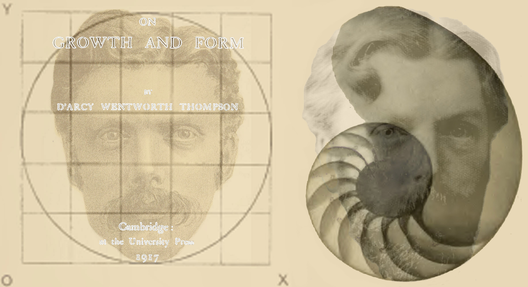D'Arcy Wentworth Thompson1860–1948
Thompson’s Growth and Form, published in 1917, provided a mathematical and structural approach to natural history. He argued that the constraints of physics played a vital role in adaptation and change. Moreover, his conceptions of development were to influence a far wider audience than natural scientists. Artists found resonances in his ideas and often paid explicit homage to them. This is a suitable response to a scientist who is justly described as a polymath. In his introductory chapter he wrote “It behoves us always to remember that in physics it has taken great men to discover simple things.” Thompson was born in Edinburgh and commenced his studies of medicine at its University and completed his degree in natural sciences at Cambridge. He was appointed to the chair of biology at Dundee when only 24 years old, and was still teaching at St. Andrews shortly before his death at 87. Growth and Form was written while he was at Dundee, but it was published in the year he took the chair of natural history at St. Andrews. The book has been hailed as one of the finest scientific texts in English. He concluded: “I know that in the study of material things, number, order and position are the threefold clue to exact knowledge… For the harmony of the world is made manifest in Form and Number, and the heart and soul of all the poetry of Natural Philosophy are embodied in the concept of mathematical beauty.” Thompson is shown twice in illustrations from his great work Growth and Form. On the left, a young Thompson is contained within circles and squares from the chapter on the theory of transformations, together with the title page of his book. On the right, an older Thompson is enclosed in the logarithmic spiral of Nautilus.
